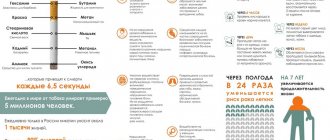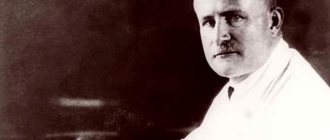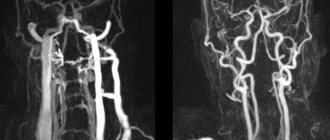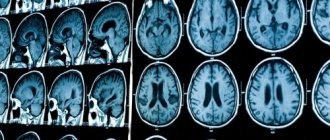Everyone knows that nicotine addiction reduces the quality of life and creates a huge number of disruptions in the human body. Despite the obvious harm to health from tobacco, there are many smokers on our planet today. It has been noticed that in some circles of society, tobacco smoking is gradually going out of fashion. But many lack the motivation to give up tobacco completely and irrevocably. In order for a person’s craving for a healthy lifestyle to outweigh the craving for nicotine, we need to learn more about the harmful effects of cigarettes on each of us and methods of eradicating the bad habit.
What should everyone know about the dangers of smoking?
Smoking and skin conditions
Undoubtedly, smoking is always associated with bad skin. Due to vasoconstriction and constant oxygen starvation of tissues, the skin is insufficiently supplied with blood. The necessary portions of oxygen and various nutrients do not reach the dermis. In the worst case, the following changes are observed:
- dehydration and tired skin;
- gray skin tone;
- early loss of elasticity;
- premature formation of facial wrinkles.
If there is any doubt that tobacco consumption affects the skin, then you can look at those who have been smoking actively for a long time. Over the years it becomes noticeable that this habit has left its mark on the whole body, and most importantly on the skin of the face.
Smoking and figure
The myth that cigarettes help you lose weight has long been dispelled. In practice, it is clear that such weight loss is often associated with general exhaustion and many other factors. On the contrary, the natural process of fat deposition may be disrupted. It should be noted that fat often accumulates more in the chest and waist area, while the least amount of fat is deposited in the hip area. That is why a person who smokes regularly, as a rule, has a disproportionate figure.
Smoking and the nervous system
Toxic tobacco smoke, which is familiar to many, has a destructive effect on the human body, affecting organs and systems. Associated phenomena with a significant smoking history are:
- fast fatiguability;
- memory problems;
- increased irritability;
- headaches and dizziness due to narrowing of blood vessels in the brain.
Doctors say that cigarettes can significantly harm the nervous system. The overall energy level drops. So to speak, vitality decreases. At the same time, it is interesting that smokers themselves often do not notice any decline, since they no longer remember what their normal energy reserve is.
Smoking and the senses
Of course, the senses may be affected. For a smoker:
- the perception of tastes is distorted;
- against the background of damage to the optic nerve, vision decreases and the ability for normal color perception is lost;
- Due to the negative effect of toxic substances on the auditory nerve, hearing is dulled.
Smoking gradually destroys the peripheral nervous system. Tobacco has the worst effect on people with existing pathologies of the nervous system.
Smoking and the respiratory system
Cigarettes cause the greatest harm to the human respiratory system. For example, chronic inflammation of the nasopharynx develops. The chemical composition of smoke irritates not only the tissues of the larynx, but also the trachea, lungs, and bronchi, which continuously inflames the airways. Smoking is often accompanied by bronchitis. Gray sputum comes out with the cough.
Constant irritation causes changes in the vocal cords, causing the voice to become rougher and dissonant. Due to the clogging of the lungs with tar and a decrease in their elasticity, emphysema develops. In any case, the lungs do not work properly and are extremely vulnerable to infections. Among other things, smoking very often provokes:
- malignant neoplasms in the lungs;
- stomach cancer;
- tuberculosis.
Smoking and the cardiovascular system
The human heart contracts more often and works under enormous overload if the body is regularly poisoned with cigarette smoke. Research shows that smoking:
- the risk of hypertension increases;
- narrowing of the lumen of blood vessels occurs, causing all organs to receive insufficient blood supply;
- atherosclerosis develops, that is, the vessels from the inside become clogged with plaque and plaque.
The main causes of coronary heart disease are hypertension and atherosclerosis, both diseases develop many times more often against the background of smoking.
Smoking and gastrointestinal tract
It should also be noted that the digestive organs, tooth enamel, pharynx, gums and tongue are seriously affected. Usually everyone notices that a smoking person always has an extremely unpleasant odor coming from his mouth. All tobacco users are automatically at risk for developing the following pathologies:
- tongue cancer;
- lip cancer;
- chronic gastritis and other gastrointestinal diseases;
- deterioration of intestinal motor activity;
- slow digestion and poor appetite;
- poor liver function;
- pancreatic diseases.
What turns many people away from cigarettes is the fact that with constant smoking, the enamel of teeth inevitably turns yellow and even discolors the gums.
Smoking and the endocrine system
Doctors believe that smoking causes a range of disorders in the human endocrine system, here are the most common consequences of these disruptions:
- sexual impotence in men;
- miscarriages, toxicosis and menstrual irregularities in women;
- improper functioning of the adrenal glands and thyroid gland.
In fact, no one guarantees that when smoking a person will or will not develop this or that disease. Scientists only talk about a certain trend and draw conclusions based on research. The realities of life are such that the body of each of us is unique, so one of us very soon develops health problems when starting to smoke, while another’s body condition worsens only after decades of experience.
The adaptive capabilities of the body and resistance to tobacco poisons play an important role. Today, smoking and the human body have been studied quite deeply, so there are many ways to give up the bad habit.
Properties of nicotine
What is nicotine? It is an alkaloid - an organic heterocyclic substance consisting of carbon, nitrogen and hydrogen atoms. The group of compounds owes its name to its slightly alkaline chemical properties. Most alkaloids have an effect on the nervous system, among those. What people hear most are caffeine, cocaine, morphine.
According to its physical and organoleptic properties, nicotine is a bitter oily liquid. At certain temperatures it easily mixes with water, their densities are almost the same - about 1 g/cm3.
Nicotine dissolves well in environments with low polarity. This causes its rapid absorption through the skin and the blood-brain barrier. At high pH values, it easily penetrates through mucous membranes.
Where is nicotine found? The alkaloid is isolated from the shoots of plants of the nightshade family (tobacco, tomatoes, eggplant, potatoes). The concentration in tobacco is maximum – up to 14%. Nicotine is synthesized in plant roots, transported and accumulated in leaves. In the human body and warm-blooded animals, the compound breaks down to form safe metabolites.
How to quit smoking quickly?
It would seem that in order to solve all problems at once, you just need to not smoke. For a person who has a persistent habit, it is very difficult to do this, despite the fact that he knows about the harm and already notices changes in his body.
Obviously, an integrated approach would work best here, within which you can act in 3 areas:
- start eating right and taking care of your overall health;
- choose a suitable type of fitness or active recreation and engage in it closely;
- conduct psychoanalysis and in various ways internally tune yourself to the desired result.
Next, we will examine each point in more detail.
Nutrition when quitting smoking
Along with stopping smoking, you need to thoroughly review and possibly adjust your menu. There should be nutritious food on the table every day. Vitamin complexes are also necessary for the speedy recovery of the body.
Fractional nutrition in small portions with the maximum introduction of healthy, dietary, cleansing products is encouraged. Other menu components include clean water and healthy drinks. Hunger is harmful to humans. Under no circumstances should you fast for more than 3 hours, so that your body does not become stressed and store excess fat.
Instead of unhealthy sweets, it is better to eat honey, dried fruits and dark chocolate in small quantities. Everyone says that it is useful to reduce the proportion of simple carbohydrates and increase the proportion of complex ones, for most of us this is correct. Let there be less trans fats in your diet, more high-quality protein foods and vegetables. It is also undesirable to consume a lot of salt and refined sugar. Let's describe a sample healthy nutrition menu.
Here are healthy breakfast options:
- cocoa with milk, currants and bran cookies;
- green apple, tea with lemon, honey toast;
- omelet or scrambled eggs, grapefruit juice, wholemeal bread;
- buckwheat with kefir;
- orange juice, oatmeal with milk and honey.
Lunch can be chosen from the following options:
- orange, egg, sandwiches and broth;
- citrus juice, fish dish and sauerkraut;
- citrus juice, vegetable salad and vegetarian pizza;
- seafood salad, apple and light soup;
- chicken soup and rice;
- vegetable salad, greens, chicken sandwich and whole grain bread.
Dinner might look like this:
- green leafy vegetables;
- baked potato;
- light meat dish;
- a fish dish;
- beef liver.
Between meals you need nutritious snacks; the following are suitable for this purpose:
- fruits and dried fruits;
- all types of nuts;
- all types of berries;
- natural yoghurts;
- unsweetened granola bars;
- toast with berry jam.
It is necessary to plan the diet of a person quitting smoking in such a way that there are approximately 6 meals (you can divide the food into 5-7 meals). This approach is often present in healthy nutrition systems, as it helps to avoid feelings of hunger and protects against overeating.
Sports and active life against smoking
As you know, smoking is incompatible with any sport, so by introducing increased physical activity into your life, you can greatly reduce the likelihood of craving for tobacco. Cigarettes are not compatible with fitness because:
- significantly impair metabolism;
- interfere with normal muscle mass gains;
- cause rapid fatigue;
- undermine the healthy functioning of the respiratory and cardiovascular systems;
- reduce sleep quality;
- provoke premature aging of the entire human body.
To give up tobacco, you can use a fail-safe method - seriously engage in sports. Suitable for beginners:
- jogging or cross-country running;
- jump rope, squats, pull-ups, push-ups;
- swimming, dancing, gym classes;
- yoga and stretching;
You can go further and do original activities, for example:
- rafting on mountain rivers;
- mountain bike;
- ecotourism;
- quad biking;
- mountaineering.
Quitting smoking is an excellent reason for frequent travel and meeting new people who practice a healthy lifestyle.
Fitness and an active life help cope with hunger pangs, which cause those who quit to risk gaining excess weight. Sports are a first-class distraction tool for people of any age. Regular exercise will help you forget about cigarettes. It is important to immediately switch your attention and radically adapt to a healthy lifestyle, otherwise thoughts about smoking will often appear.
When quitting tobacco, many suffer from unbearable depression. Fitness helps overcome depression and avoid severe stress. Physical activity quickly relieves stress.
Sport also gives a detox effect. This means that proper training helps to effectively cleanse the entire body of harmful substances accumulated over years of smoking. The result is improved well-being, body appearance and overall health.
If you decide to quit smoking and go in for sports, then it is advisable to take a pause to allow your body to recover. Then gradually introduce and gradually increase the load.
The psychological side of quitting smoking
In many cases, quitting smoking is only a separate stage in improving a person’s personality, so in severe cases it is important to cooperate with a psychologist and conduct a thorough self-analysis. Do not neglect psychotherapy sessions. To do this, you need to find an appropriate paid specialist. He should have extensive experience specifically in the field of combating nicotine addiction.
Some people find it helpful to keep a diary - on paper or on the Internet. You can also join various VKontakte communities, look for motivation on Instagram or other interesting virtual platforms.
You should definitely read smart books and watch videos on the topic of solving mental problems, personal growth, self-development and motivation. It is useful to get rid of the very ritual of smoking, that is, change the nature of the break at work, not go to clubs, limit communication with friends who smoke, at least for a while. It is also good to remove all accessories that in any way resemble cigarettes.
It would be great if, at the very beginning of the journey of a person who wants to give up tobacco forever, a list of reasons why he needs to quit smoking once and for all is compiled. You should view lifestyle changes not as a loss, but as a valuable gift to yourself. Any day is suitable for this idea; there is no reason to put it off.
It is important to make a special substitution for yourself. Instead of cigarettes, you need to load yourself with important work, set grandiose goals, make inspiring plans, start a new hobby, start learning something. The worst thing is if a person finds himself inactive, he has nothing to do, he is bored.
Instead of being alone, it is better to be around other people who are quitting smoking. Being among like-minded people is the best option for all types of addictions. Whenever possible, you need to talk through all your feelings and experiences, adopt other people’s experiences and share your own experiences.
You should not overwork, you should always take breaks and give yourself the opportunity to get quality rest. While observing changes in your body, and they will definitely happen, you need to record all the positive factors and take motivating photos.
To increase your chances of success, it is useful to keep a diary notebook and clearly plan day by day, set clear, easily achievable goals for the week, month, year. Every day should be interesting, varied, eventful and fruitful, so that there is no time left for smoking itself and thinking about it.
Features of quitting cigarettes
Usually the critical period is short. The main thing is to survive it, then it will be much easier. Sometimes a person fails to quit smoking the first time and he despairs and gives up. If one attempt fails, this is not a failure; you can try again without repeating past mistakes.
What is the best way to quit smoking - quickly or slowly? There is an answer to this question - most people quit in one day and with a positive attitude, do not drag out this process for months and achieve brilliant success. Any nicotine replacement therapy is carried out strictly under the supervision of a doctor.
We believe that in reality the physical craving for cigarettes is extremely insignificant for a person. Smoking is a special social habit that can be quickly acquired and just as quickly abandoned, if desired and with the right approach. Next we will discuss other important issues on the topic of smoking.
Literature
- Kroemer N. B., Guevara A., Vollstädt-Klein S., Smolka M. N. (2013). Nicotine alters food-cue reactivity via networks extending from the hypothalamus. Neuropsychopharmacology, 38, 2307–2314;
- Randall RV The history of tobacco. Boston: Boston University Medical Center, 1999;
- King James I of England. A counterblast to tobacco (1604). London: G. Putnam and Sons, 1905;
- Borio G. (2003). Tobacco Timeline: The Seventeenth Century—The Great Age of the Pipe. Website tobacco.org;;
- Kaminsky M. Ein primäres Lungencarcinom mit verhornten Plattenepithelien. Greifswald: Inaug. Diss. Germany, 1898;
- Formation of the resting membrane potential;
- Nobel Prize in Physiology or Medicine (2013): vesicular transport;
- How does neurotransmitter release occur?
- The molecule of sanity;
- https://biomolecula.ru#;
- Kolappan C, Gopi P G (2002). Tobacco smoking and pulmonary tuberculosis. Thorax, 57, 964–966;
- Klareskog L., Stolt P., Lundberg K., Källberg H., Bengtsson C., Grunewald J. et al. (2006). A new model for an etiology of rheumatoid arthritis: smoking may trigger HLA-DR (shared epitope)-restricted immune reactions to autoantigens modified by citrullination. Arthritis Rheum. 54 (1), 38–46;
- Modestou M. A., Manzel L. J., El-Mahdy S., Look DC (2010). Inhibition of IFN-gamma-dependent antiviral airway epithelial defense by cigarette smoke. Respira. Res. 11, 64;
- Parkes G. C., Whelan K., Lindsay J. O. (2014). Smoking in inflammatory bowel disease: impact on disease course and insights into the aetiology of its effect. J. Crohns. Colitis. 8 (8), 717–725;
- Lee S.H., Goswami S., Grudo A., Song L.Z., Bandi V., Goodnight-White S. et al. (2007). Antielastin autoimmunity in tobacco smoking—induced emphysema. Nat. Med. 13, 567–569;
- Toda N. and Toda H. (2010). Nitric oxide-mediated bloodflow regulation as affected by smoking and nicotine. Eur. J. Pharmacol. 649, 1–13;
- Smoking harms the Y chromosome;
- Drug delivery based on receptor-mediated endocytosis;
- Takajo Y., Ikeda H., Haramaki N., Murohara T., Imaizumi T. (2001). Augmented oxidative stress of platelets inchronic smokers. Mechanisms of impaired platelet-derived nitric oxide bioactivity and augmented platelet aggregability. J. Am. Coll. Cardiol. 38 (5), 1320–1327;
- Moore D., Aveyard P., Connock M., Wang D., Fry-Smith A., Barton P. (2009). Effectiveness and safety of nicotine replacement therapy assisted reduction to stop smoking: systematic review and meta-analysis. BMJ, 338 , b1024;
- Tutka P. and Zatoński W. (2006). Cytisine for the treatment of nicotine addiction: from a molecule to therapeutic efficacy. Pharmacol. Rep. 58 (6), 777–798;
- West R., Zatonski W., Cedzynska M., Lewandowska D., Pazik J., Aveyard P., Stapleton J. (2011). Placebo-controlled trial of cytisine for smoking cessation. N.Engl. J. Med. 365 (13), 1193–1200;
- Mills E. J., Wu P., Spurden D., Ebbert J. O., Wilson K. (2009). Efficacy of pharmacotherapies for short-term smoking abstinence: A systematic review and meta-analysis. Harm reduction. J. 6, 25;
- Wu P., Wilson K., Dimoulas P., Mills E. J. (2006). Effectiveness of smoking cessation therapies: a systematic review and meta-analysis. BMC Public Health. 6, 300;
- Kosten T. R. and Domingo C. B. (2013). Can you vaccinate against substance abuse? Expert Opin. Biol. Ther. 13 (8), 1093—1097;
- Thank you, dear Ministry of Health, for warning me!;
- Ng M., Freeman MK, Fleming TD, Robinson M., Dwyer-Lindgren L., Thomson B. et al. (2014). Smoking prevalence and cigarette consumption in 187 countries, 1980-2012. JAMA. 311 (2), 183–192..
Is it possible to smoke in public places?
For several years now, there has been a law banning smoking in public areas. This measure is aimed at protecting the interests and health of any non-smoker. In which places is it illegal to smoke today?
- territory of healthcare institutions, these include hospitals, sanatoriums;
- territory of educational, cultural and sports institutions, for example, a school or university;
- public transport, trains, planes, ships, bus stations, airports, taxis;
- government and government buildings;
- elevators, playgrounds and staircases, beaches, gas stations, when driving;
- repair, sewing and workshop establishments;
- student dormitories, pubs, cafes, restaurants.
Smoking is not prohibited:
- on the platform before boarding the train;
- in specially equipped corporate premises;
- on the street away from public places;
- inside the car, not while driving;
- within the walls of your own real estate - apartment, house.
Cafes and restaurants are adapting to the situation and protecting themselves from fines by setting up special smoking areas.
It is known that a caught violator may initially receive a warning, then a fine of 500 or 1,500 rubles. A person who smokes on the playground or a parent who smokes with their children may be required to pay 2,000-3,000 rubles.
The anti-tobacco law regarding the sale of slaughter products also helps control the situation. For the sale of tobacco products to minors and individuals, fines of 3,000-5,000 rubles are imposed, and for officials ten times more. Organizations that violate the smoking law are subject to fines of 100,000-150,000 rubles.
All bans do not apply to electronic cigarettes in our and European countries. Steam is considered less hazardous to health, but many experts doubt it.
It turns out that smoking in public places is unacceptable, and fines are imposed for this act. Today, smokers must look for the right place to get their next dose of nicotine.
Nobody can stop you from smoking. Of course, this can be done, but every adult, when making such a choice, must realize that by doing so he can bring about many undesirable consequences for himself, his children and loved ones.
Tobacco yesterday and today
Everyone knows that the American Indians taught Europeans to use tobacco. Soon after Columbus's expeditions at the end of the 15th century, the Spaniards began cultivating tobacco. Tobacco owes its scientific name (lat. Nicotiana) to the French ambassador to Portugal Jacques Nicot, a famous popularizer of tobacco products in the second half of the 16th century. Niko's authority was so great that tobacco quickly began to be used not only for entertainment purposes, but also in medical practice. Thus, in 1571, the Spanish physician Nicolas Monardes wrote a book about medicinal plants, in which he stated that tobacco healed 36 diseases [2].
The fight against tobacco smoking began in the 17th century. The English king James I was one of the first to pursue an anti-tobacco policy. In his 1604 treatise, “A Counterblaste to Tobacco,” he called smoking “a custom that is disgusting to the sight, offensive to the smell, injurious to the brain, and dangerous to the lungs.” The treaty was followed by a 40-fold increase in the duty on tobacco. In the Ottoman Empire, smoking was banned in 1633 by decree of Sultan Murad IV and was punishable by death, but the ban was soon replaced by a tax. In pre-Petrine Russia, smokers were beaten and even exiled or executed. In many other European and Asian countries, barriers to the spread of tobacco have existed for quite a long time [3, 4].
In 1828, scientists from Heidelberg isolated nicotine in its pure form and concluded that it was a strong poison. Soon after, nicotine began to be used as an insecticide. Around the same time, cigarettes appeared, still inferior in popularity to cigars. Despite the global spread of tobacco, tobacco smoking has not yet been recognized as a global problem. Thus, by 1889, only 140 cases of lung cancer were documented worldwide. In the same year, the English physiologist John Newport Langley described the effect of nicotine on the conductivity of the nerve ganglia: nicotine blocked impulse transmission in the sympathetic nervous system [5].
At the beginning of the 20th century, cigarettes became the main tobacco product, and the largest tobacco companies in the world were based in the United States. In 1912, oncologist Isaac Adler first pointed out the connection between smoking and lung cancer. Lung cancer remained a rare disease until the First World War, after which smoking became a widespread habit due to the inclusion of cigarettes in army rations.
In the 1930s, the connection between smoking and lung cancer, as well as a reduction in life expectancy, was strictly proven. Nevertheless, the popularity of tobacco continued to grow at an unprecedented rate. It was only in the 1980s that nicotine addiction was recognized worldwide, followed by restrictions on the advertising and distribution of tobacco products. It was since the 1980s that health care structures around the world began to fight tobacco smoking, despite which, the tobacco industry is still thriving and increasing its turnover every year.
Interesting statistics on smoking in Russia
Experts analyzed about 1,600 people living in different federal districts, republics, territories, and regions. As of May 2021, the following interesting data was obtained:
- recently they began to smoke more actively - 16% (for St. Petersburg and Moscow this figure is 20%);
- consume one or more packs per day - 17%;
- There are more smokers among young people and men than among older people and women;
- have never tried smoking - 57%;
- smoke several cigarettes almost every day - 12%;
- smoke several cigarettes per month or week - 2%;
- non-smoking population - 69%;
- over the past year, 28% have limited smoking (of which 41% are pensioners);
- smoke regularly - 54%;
- try to smoke exclusively in places that are not prohibited by law - 36%;
- violate the anti-tobacco law - 14% (the same figure last year 2015 - 15%).
The listed facts became known thanks to the work of the All-Russian Center for the Study of Public Opinion.
Of course, not only cigarette smoke, but many other factors have a destructive effect on a person. For example, polluted environment, junk food, alcohol, stress. In any case, when you quit smoking, the quality of life is higher, the likelihood of illness is lower, your health and mood are better, time and budget are saved. The choice is yours. We do not call for any action, but only say that you need to pay attention to your health in a timely manner and, if possible, minimize the negative impact of a bad habit on yourself and others.
And the smoke of the fatherland is sweet and pleasant to us...
The popularization of smoking began about a hundred years ago, and since then the number of smokers has been growing steadily. Today there are about a billion smokers living on Earth. However, in recent decades there has been a trend towards a decrease in the proportion of smokers in the population. Thus, in 1980, 40% of men and 10% of women in the world smoked daily; in 2012, these numbers dropped to 30% and 6%, respectively.
The popularity of smoking is falling globally, but unfortunately not in Russia, where 38 million people smoke on average more than 20 cigarettes a day, the same as 40 years ago. Russia today ranks second in the world in tobacco consumption after China [27].
We can only hope that the development of tobacco legislation in Russia will soften these harsh statistics, but we must remember that responsibility for our health lies primarily with ourselves, and not with the state.
I wish you good health, your author, a former smoker with five years of experience.
Nervous system
The nervous system is the most complex and fragile in our body. It participates in all physiological processes, all our actions are carried out with its help. Therefore, smoking is dangerous primarily for the nervous system. When a person inhales the combustion products of tobacco, they enter the lungs, then are transferred to the blood, which delivers them directly to the brain, all this takes about eight seconds. Nicotine “spoils” the pleasure center in the brain, and naturally a person becomes addicted.
Thus, the nervous system makes us dependent on cigarettes. The combustion products of tobacco leaves have an effect on many nervous functions, but the central nervous system, most likely the brain, is more affected. After all, when smoking, the brain vessels narrow, and as a result, the amount of blood flowing to the nervous tissue decreases. For this reason, the head begins to hurt more often, the state of memory worsens, and a person cannot concentrate for a long time.











